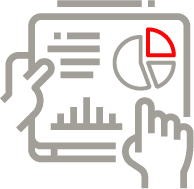21st Century Evolution of Sustainable Plastic Technology Trends

Looking at the evolution of sustainable plastic technology innovators and patent owners in the period 2000 – 2023.
Introduction
World Environment Day 2023 focuses on solutions to plastic pollution.
The LexisNexis® Cipher internal sustainability classifiers were used to explore the key players contributing to sustainable plastic innovation in the 21st century
The technology areas covered in this analysis include:
- Bio-degradable polymers
- Bio-based polymers
- Sustainable adhesives.
Which companies are leading the race?
The leading owners and innovators in sustainable plastic technologies over the last 23 years have been predominantly Japanese chemical, and pulp and paper companies.
BASF and Dow are the only two non-East Asian organisations to feature in either of the racer charts (above and below).
Mitsubishi Chemical have been a constant at the helm, with their lead only being overtaken by Toray between 2013 – 2014. Surprisingly, they have maintained mostly undisturbed supremacy even with a continuously shrinking portfolio since 2006.
The rise of LG Chem
LG Chem’s rapid progression since 2014 suggests they could potentially leapfrog Mitsubishi Chemical in the near future, with their rate of publications increasing since entering the top 10 innovators in 2019.
To emphasise LG’s meteoric rise, they ranked at 90th in 2000 with only 15 active families, compared to 234 in 2023 – an increase of 1460%.
In 2023 alone, LG accounts for 17% of total publications in sustainable plastics, followed by Kuraray at 7%. Kuraray remains the only other ever-present as the leaders in sustainable plastic ownership since 2000, alongside Mitsubishi Chemical and Toray.
All this movement points towards a dynamic and evolving landscape.
Patent owners with a lessening impact
Mitsui Chemicals are the most noteworthy fallers from the Top Owners list, dropping from second in the early 2000s to being relegated from the top 10 in 2019.
In fact, its active patent portfolio has shrunk by 65% when comparing its peak in 2006 to 2023. The dip in the rate of publications since 2012 reinforces this. Mitsui has only published 77 patent families between 2012 and 2023, compared to 261 published families from 2000 – 2011.
The overall number of active patent families increased rapidly from 2000 to 2009 but has remained stagnant since then. Even with the implementation of the Sustainable Development Goals (SDGs) in 2016, the change in overall active patent families does not reflect that. Learn which companies are the world’s leading patent owners with the potential to drive transformative innovation toward the UN SDGs in the Exploring the Global Sustainable Innovation Landscape: The Top 100 Companies and Beyond report.
Analyzing the micro-trends
A deeper look at the micro trends paints a different picture.
Although the landscape has stagnated around 10,000 – 11,000 active families since 2004, the ownership holding of the top 10 owners has significantly reduced, making it a more distributed landscape.
In every year since 2000, the dominance of the top 10 owners has gradually reduced – from 21% at the start of the period to 14% in 2023.
From this we can take that innovation is currently being driven by a greater pool of smaller organizations – highlighting the growing importance of switching to sustainable plastic alternatives globally.






